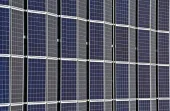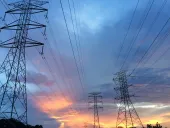Water and PV plants: Why we may not be able to have both
By Agostinho Miguel GarciaOne of the major issues in solar power that is usually overlooked and is so fundamental to our life is water. Concentrated solar power (CSP) uses a whopping amount of water per MWh produced, totally driven by the need to cool the steam out of the turbine, key to achieving a good turbine efficiency and thus be able to generate as much electricity as possible.
Key to the discussion in CSP is that these plants use the same amount as any conventional thermal power plant, but usually where we locate a coal power plant we may not actually locate a CSP plant and vice versa. Usually places with abundant water resources are not rich in Direct Normal Irradiation, which is the solar irradiation component relevant to CSP plants. There may be a single exception which is near the coast where water can be desalinated with the extra heat dissipated from the turbine.
Such applications though quite common in CSP analysis and reports are somewhat rare if not absent. The main issue remains that in a water starved area CSP is not feasible unless air cooling is
used with impact in the efficiency of the plant, but in good DNI locations that can be mitigated by adding more solar field. The other water usage is to wash the mirrors and that requires as much as per m2 of module area in the PV plants.
In the PV plants the water needs are resumed to washing the PV modules and that may require between 1 and 3 liters per m2. Same would apply to the CSP plants, as mentioned. The next point is how often do we clean. If the rule of one cleaning per month is used each MWp of PV modules requires:
- 75000 to 225000 liters per year for modules of 16% efficiency
- 80000 to 240000 liters per year for modules of 15% effciency
For a comparison we need 100 to 200 liters per person per day in India.
For a CSP plant the same analysis would yield 60000 to 180000 liters per MW of installed capacity (Considering 30% efficient turbines on a Mwthermal of solar field considering 600 Wh/m2 for the solar field). These numbers mean that:
- 1 MWp of PV modules = 200 to 650 liters per day = 1 to 3 persons per day
- 1 MW of CSP = 140 to 400 liters per day = 1 to 2 persons per day
The target of 100 GW of solar power in India, using mostly PV, means: additionally 115000 to 345000 persons per day. This means that the population in the desert areas of India where most likely the solar plants will be located will have no water or very much depleted available water resources. Now these figures double with the current practice of doing 2 cleanings per day. We could be talking about 1 million people being impacted (rural population use less water).
The current installed PV capacity in the world is around 300 GW, so we have potentially already 3 million people deprived of water or impacted by solar power plants. And this is just the beginning, we need probably several tenfold to be able to power the world. This is not possible to continue and yes efficiencies must come slightly down, reducing the number of cleanings, decrease soiling, use hybrid and dry cleaning solutions that use much less water per m2.
Solar power cannot be a competitor for water, otherwise it will not be sustainable in the long run. Solar policies must take into consideration this issue and the impact on their solar rich areas: northern part of Chile, desert areas of India in Rajasthan, Gujarat and Andrah Pradesh, South african Northern Cape province, Namibia,
desert areas in Australia, desert areas in US, desert areas in northern Africa and many other locations around the world. China with the current appetite for solar power is also depleting further the water availability for consumption in the country with impacts for their people. This must be changed and quickly! Clean power cannot mean water scarcity for local populations in the areas of the solar plants!




















 Advertise
Advertise






